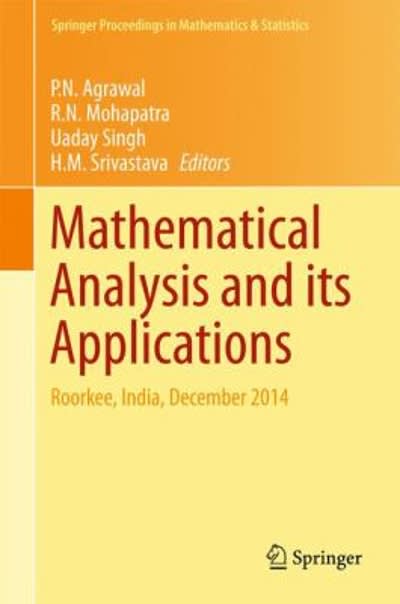Question
ALL QUESTIONS WILL BE BASED OFF OF QUESTION #1 QUESTION 1 CCC is buying some individual desks for its students and wants to know what
ALL QUESTIONS WILL BE BASED OFF OF QUESTION #1
QUESTION 1
CCC is buying some individual desks for its students and wants to know what percentage of left-handed desks to buy. The buyer's current best guess at the fraction of people who are left-handed is 10% (from historical data), but they know that our statistics students are very good and seeks their advice. The buyer wants to know if the percentage of CCC students who are left-handed is different from 10%. The statistics student decides to poll 380 students about their handedness.
What is the random variable? What is the parameter?
Group of answer choices
A. The random variable is the number of people in the sample who are left-handed and the parameter is the percentage of all CCC people who are left-handed.
B. The random variable is the percentage of all CCC people who are left-handed and the parameter is the number of people in the sample who are left-handed.
C. The random variable is the number of people in the sample who are left-handed and the parameter is the mean of all CCC people who are left-handed.
D. The random variable is the mean of all CCC people who are left-handed and the parameter is the number of people in the sample who are left-handed.
QUESTION 2
In the context of the left-handed desks issue, state the null and alternative hypotheses statistically.
Group of answer choices
A. H0: p10%; Ha: p=10%
B. H0: p=10%; Ha: p10%
C. H0: 10%; Ha: =10%
D. H0: =10%; Ha: 10%
E. H0: p^=10%; Ha: p^10%
F. H0: x=10%; Ha: x10%
QUESTION 3
In the context of the left-handed desks issue, state the null and alternative hypotheses in words in the context of the problem.
Group of answer choices
A. H0: the true proportion of left-handed students at CCC is 10% and H1: the true proportion of left-handed students at CCC isn't 10%.
B. H0: the true proportion of left-handed students at CCC is 10% and H1: the true proportion of left-handed students at CCC is more than 10%.
C. H0: the true proportion of left-handed students of the 380 sampled is 10% and H1: the true proportion of left-handed students of the 380 sampled isn't 10%.
D. H0: the true proportion of left-handed students of the 380 sampled is 10% and H1: the true proportion of left-handed students of the 380 sampled is less than 10%.
QUESTION 4
Discuss the consequences of a Type I vs. Type II error in the context of the problem, generally.
Pick a significance level, , and justify your choice based on your explanation above.
QUESTION 5
What are the assumptions for this hypothesis test? Mark all that are true.
Group of answer choices
A. A simple random sample was taken or the sampling was done by a not-obviously-biased expert/organization.
B. The conditions for a binomial experiment were met.
C. The sampling distribution of the sample statistic, p^, is normally distributed.
D. The random variable is (approximately) normally distributed.
QUESTION 6
Assuming that the statistics students has access to the list of people associated with the college, is the assumption of a simple random sample or a not-obviously biased expert taking the sample met? Mark True if so, False if not, and Not Applicable if this isn't an assumption for this test.
Group of answer choices
True
False
Not Applicable
QUESTION 7
In the context of this problem, is it True/False/Not Applicable that there are a specific number of people polled?
Group of answer choices
True
False
Not Applicable
QUESTION 8
In the context of this problem, is it True/False/Not Applicable that determining the handedness of any individual polled doesn't affect the handedness of the other people polled?
Group of answer choices
True
False
Not Applicable
QUESTION 9
In the context of this problem, is it True/False/Not Applicable that there are only 2 possible outcomes for the student's polling question: "can you proficiently use your left hand to write?" Note: ambidextrous people (people who can use both hands proficiently) would say "yes" to this question.
Group of answer choices
True
False
Not Applicable
QUESTION 10
In the context of this problem, is it True/False/Not Applicable that the probability of someone being able to use their left-hand is approximately the same for each individual?
Group of answer choices
True
False
Not Applicable
Step by Step Solution
There are 3 Steps involved in it
Step: 1

Get Instant Access to Expert-Tailored Solutions
See step-by-step solutions with expert insights and AI powered tools for academic success
Step: 2

Step: 3

Ace Your Homework with AI
Get the answers you need in no time with our AI-driven, step-by-step assistance
Get Started


